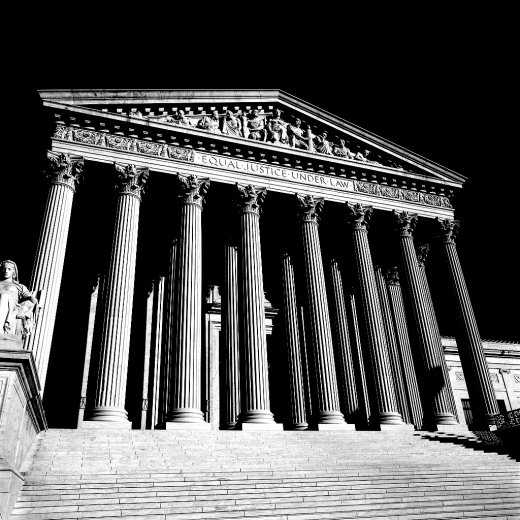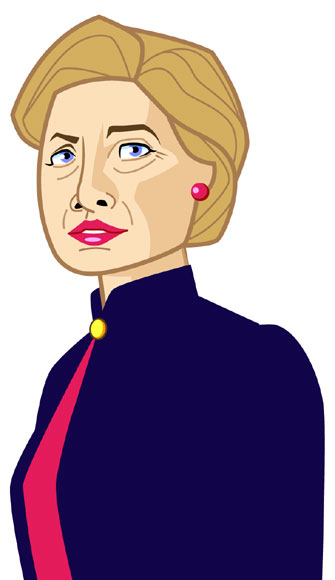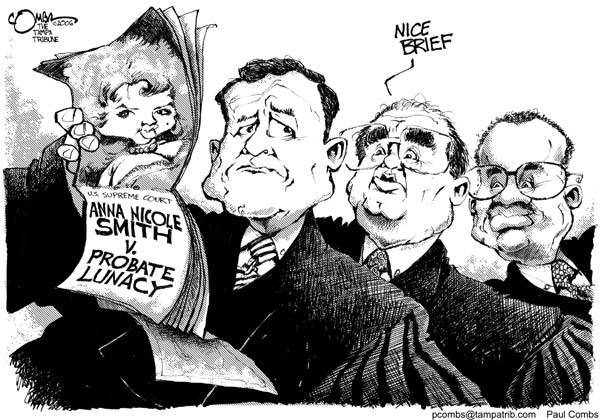
VIA NEW YORK TIMES: WHEN a majority of Supreme Court justices adopt a manifestly ideological agenda, it plunges the court into the vortex of American politics. If the Roberts court has entered voluntarily what Justice Felix Frankfurter once called the “political thicket,” it may require a political solution to set it straight. When the court overreaches, the Constitution provides checks and balances. In 1805, after persistent political activity by Justice Samuel Chase, Congress responded with its power of impeachment. Chase was acquitted, but never again did he step across the line to mingle law and politics. After the Civil War, when a Republican Congress feared the court might tamper with Reconstruction in the South, it removed those questions from the court’s appellate jurisdiction.
political activity by Justice Samuel Chase, Congress responded with its power of impeachment. Chase was acquitted, but never again did he step across the line to mingle law and politics. After the Civil War, when a Republican Congress feared the court might tamper with Reconstruction in the South, it removed those questions from the court’s appellate jurisdiction.
But the method most frequently employed to bring the court to heel has been increasing or decreasing its membership. The size of the Supreme Court is not fixed by the Constitution. It is determined by Congress. If the current five-man majority persists in thumbing its nose at popular values, the election of a Democratic president and Congress could provide a corrective. It requires only a majority vote in both houses to add a justice or two. Chief Justice John Roberts and his conservative colleagues might do well to bear in mind that the roll call of presidents who have used this option includes not just Roosevelt but also Adams, Jefferson, Jackson, Lincoln and Grant. MORE
RELATED: Disturbingly, John Roberts’s and Samuel Alito’s actions on the Court now speak much louder than their words to Congress. During the past year, Roberts and Alito have repeatedly abandoned the principle of stare decisis, and they have done so in a particularly insidious manner. In a series of very important decisions, they have cynically pretended to honor precedent while actually jettisoning those precedents one after another. The tactic, in short, is to purport to respect a precedent while in fact interpreting it into oblivion. Every first-year law student understands the technique. It works like this: “Appellant argues that Smith v. Jones governs the case before us. But Smith v. Jones arose out of an accident that occurred on a Tuesday. The accident in this case occurred on a Thursday. We do not overrule Smith v. Jones, but we limit it to accidents that occurr on Tuesdays.” This illustration is, of course, a parody of the technique. But it captures the Roberts/Alito style of judicial craftsmanship.
 Let me offer just a few examples. In Gonzales v. Carhart, the Court, in a five-to-four decision, upheld the constitutionality of a federal law prohibiting so-called “partial birth abortions,” even though the Court had held a virtually identical state law unconstitutional seven years earlier. As Justice Ruth Bader Ginsburg rightly observed in dissent, the majority, which included Justices Roberts, Alito, Scalia, Kennedy, and Thomas), offered no principled basis for ignoring the earlier decision. The only relevant change was Alito for O’Connor. MORE
Let me offer just a few examples. In Gonzales v. Carhart, the Court, in a five-to-four decision, upheld the constitutionality of a federal law prohibiting so-called “partial birth abortions,” even though the Court had held a virtually identical state law unconstitutional seven years earlier. As Justice Ruth Bader Ginsburg rightly observed in dissent, the majority, which included Justices Roberts, Alito, Scalia, Kennedy, and Thomas), offered no principled basis for ignoring the earlier decision. The only relevant change was Alito for O’Connor. MORE
